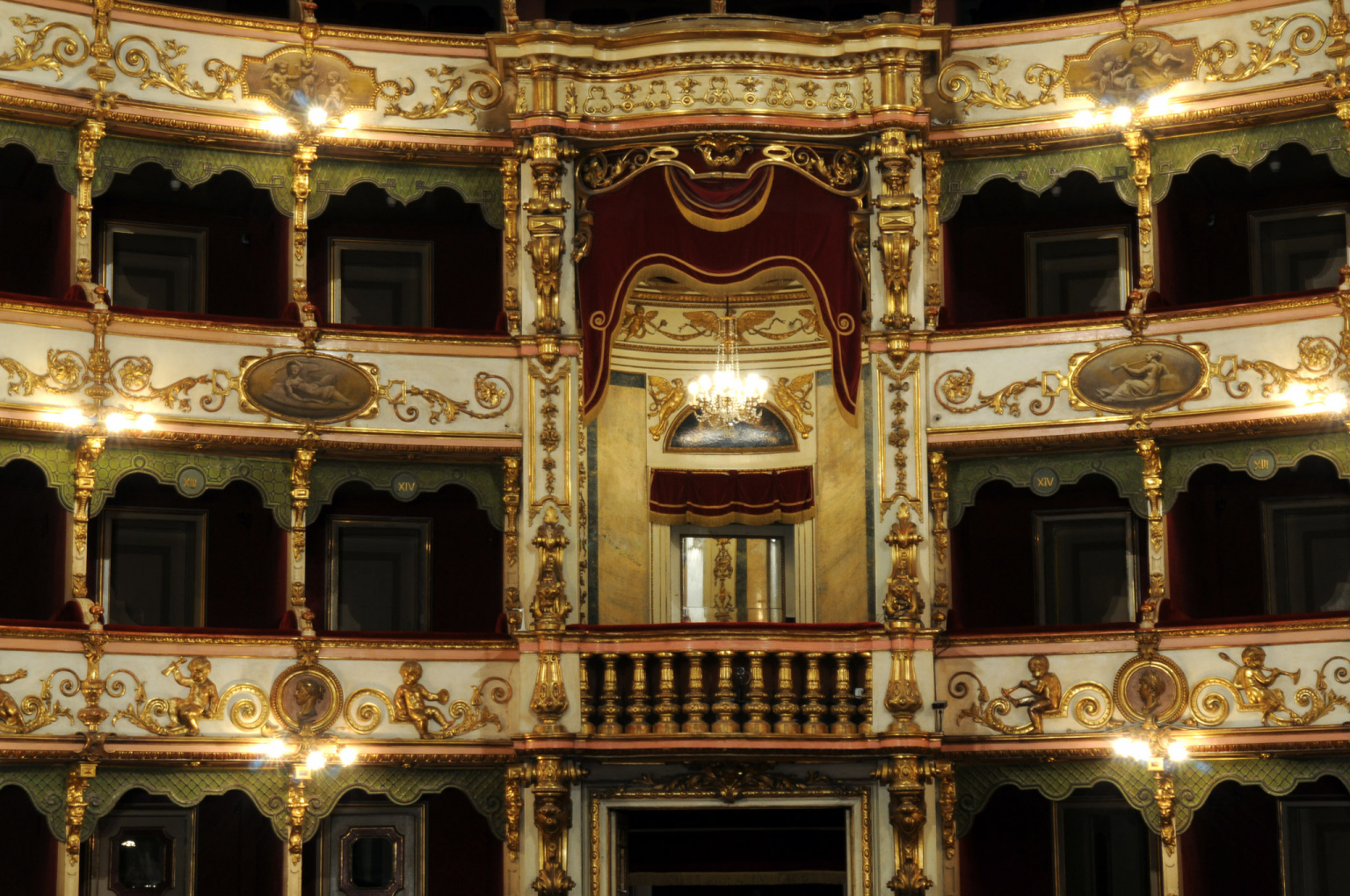The current room is a classic Italian theater, designed by Luigi Canonica and built in 1810. It has a horseshoe shape and measures about 22 x 17 mt. It has five orders of seats: three boxes and two galleries.
This area was occupied by a courtyard used for the equestrian activities by Accademia degli Erranti while performances were held under the academic room, a sort of porch. In 1740, a first theater replaced the courtyard.
In the past, the audience would occupy specific levels depending on their social class. The upper levels were obviously for the most privileged and the box wall that creates a clear division between the main floor and the boxes highlights the social difference between people in the stalls – the middle class – and the aristocrats in the boxes. The upper gallery (loggione) was reserved for the working class. The layout of this room was inspired by the topos of the square, courtyard or palace room where different classes coexisted.
The spectator who enters the room finds a marvelous environment created by the rich dark red of the stalls, the wall paper, and the box seats and the ivory and gold of the boxes and the wooden and papier-mâché decorations.
The original decoration was by Giuseppe Teosa. Most of it was replaced in 1862 with works by Girolamo Magnani. The parapets of the box rows have gilded relief decorations with ivory background and are different for each row. The main floor is simpler; the first row of boxes displays shoots, putti playing instruments, and men’s’ profiles; the three upper levels have alternating gilded reliefs of nude women, putti, and musical instruments.
The proscenium arch still boasts most of its original decorations. It is composed of two horizontal entablatures supported on the sides by golden corbels surmounted by winged female figures playing long tubas. In the center, a clock is decorated with two almost lying figures.
The ceiling is decorated with geometric gilded plaster motifs and Magnani’s frescoes organized in circular concentric crowns on a blue sky background. These crowns are composed of oval monochrome medallions with putti, monochrome female figures, and allegories of Comedy, Tragedy, Music, and Dance. In the middle of the ceiling there is a hole partially covered by a grid that once supported the large chandelier.
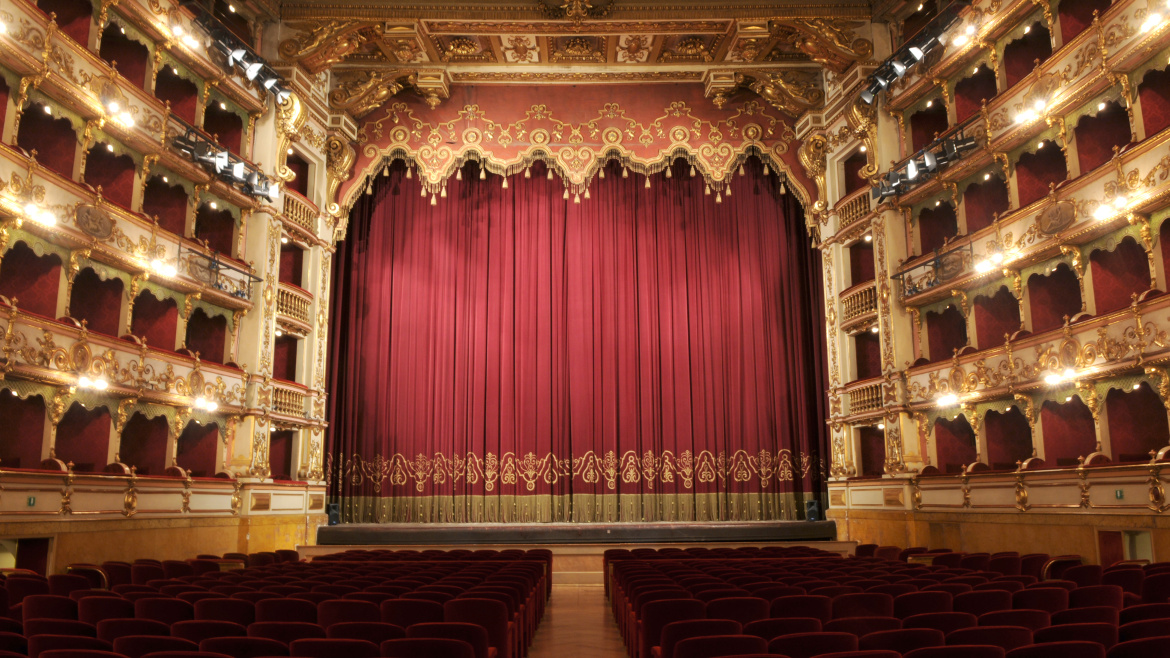
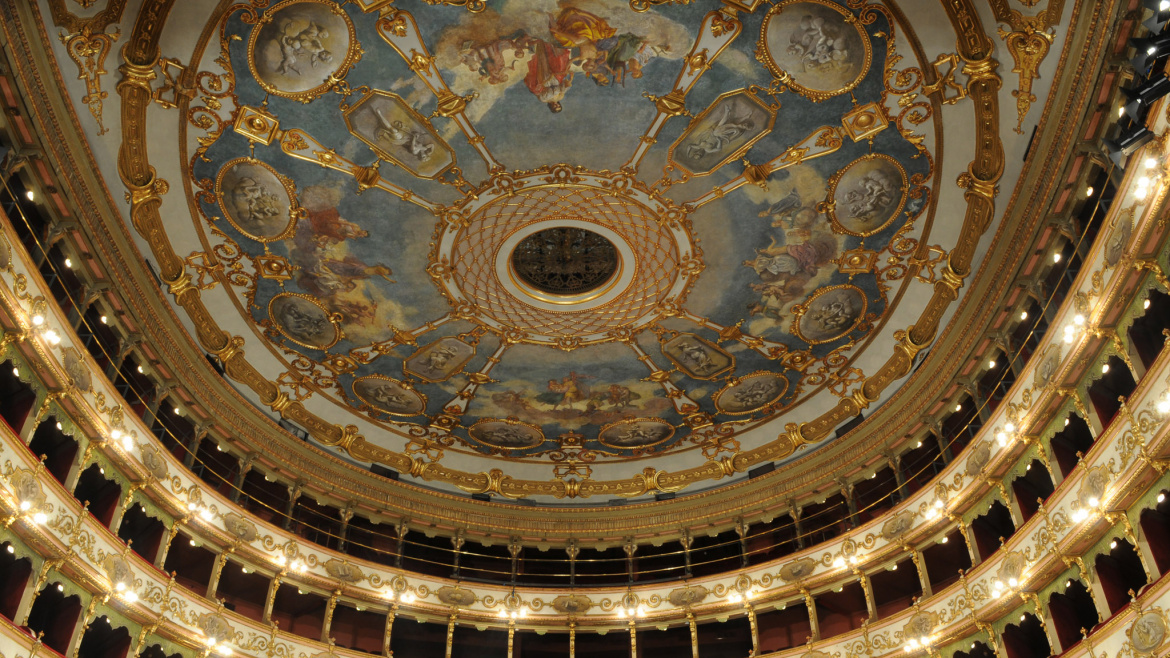
In the past centuries, the stalls were the meeting area where parties, balls, and equestrian shows were organized, as well as conferences and debates. This area was therefore conceived not only as a place for lux and entertainment but also for education.
At the moment, there are 18 fixed seat rows plus 4 extra rows in the orchestra area for a total of about 400 seats. The fabric color is exactly the same as the one used for the boxes and the floor has a gentle slope towards the stage.
The floor was renovated in 2001 and is made of oak hardwood which improves the room’s acoustics. The air conditioning vents in the floor were added to increase audience comfort during the hours spent in the theater, irrespective of what the weather is like outside.
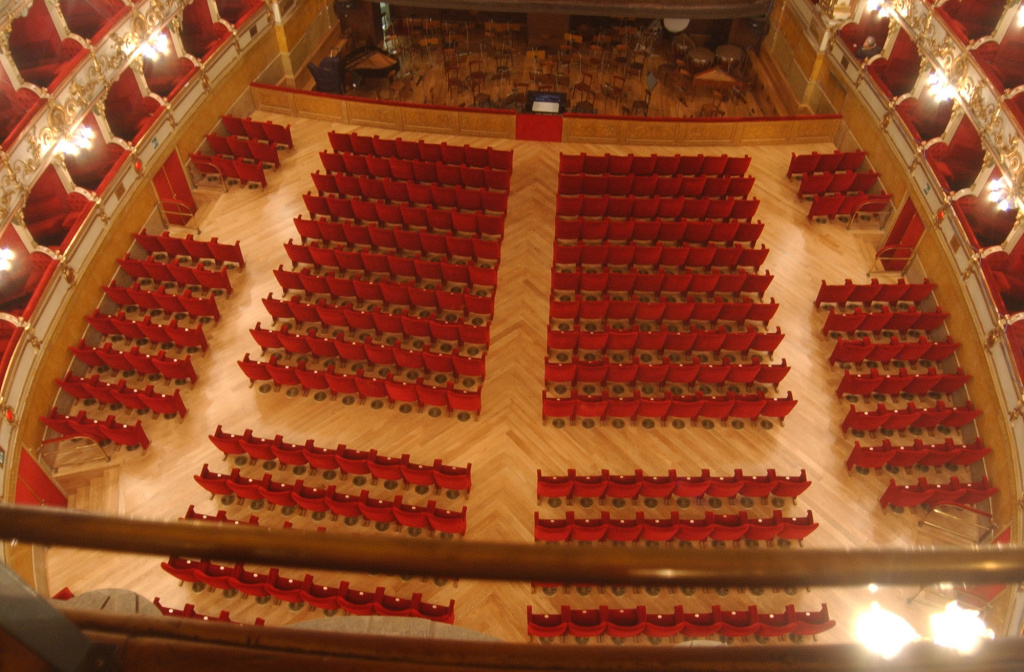
There are five levels of boxes and galleries which constitute the room walls. Three levels contain 28 boxes each, divided in two sections. The two remaining levels are galleries. The first gallery has eight boxes on each side of the proscenium and a central section with no partitions between the seats. The last level is completely organized as gallery with seats on degrading steps.
The inside of the boxes is covered with the traditional dark red fabric; the same color is used for the velvet padding that covers the wooden benches and seatbacks.
Coat hangers and mirror support plates complete the box furnishing.
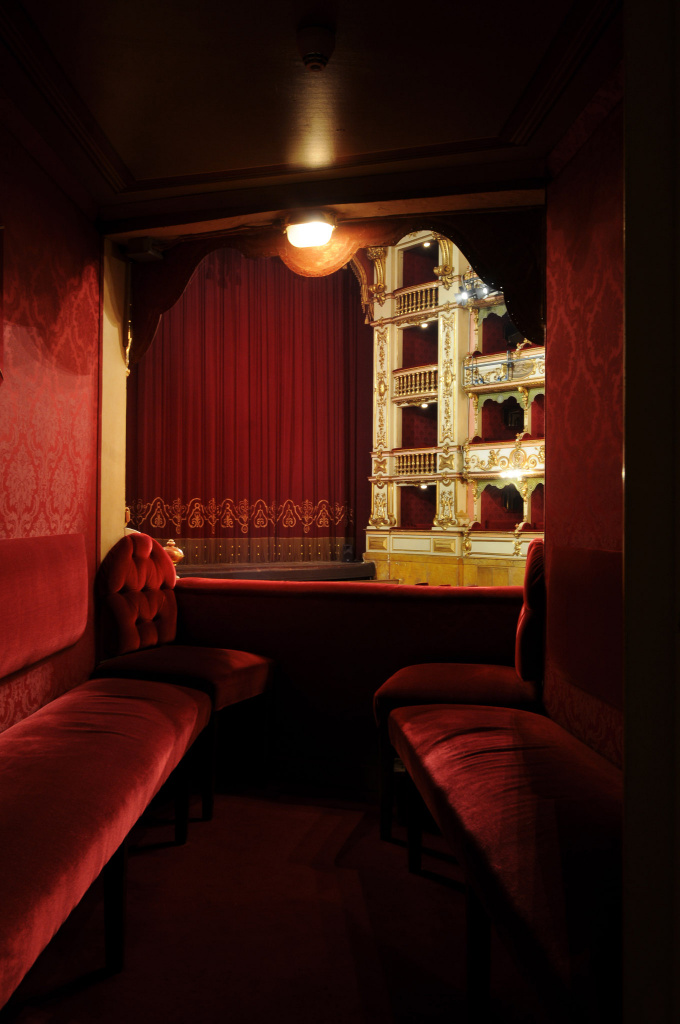
As is typical in Italian theaters, the royal box of Teatro Grande is in the back of the room in a central position and occupies the first and second level. Seen from the main floor, the royal box has an almost rectangular opening, with only slightly curved and jutting out balustrade and canopy. Inside, however, the layout is circular and covered by a small dome with a lozenge decoration.
The neoclassical decorations of the interior are the only ones still dating from 1810. They include a horizontal frieze with golden eagles along the upper portion of the walls and golden candelabra columns with Egyptian motifs. Above the door, an 1810 lunette canvas by Domenico Vantini depicts an allegory of Night.
Behind the royal box there is a small drawing room with elegant decorations and furnished with the neoclassical gilded wooden chairs that were used during royal visits.
